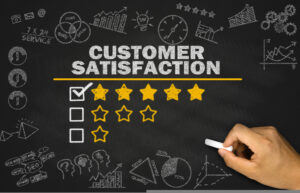The Art of Brand Tracking
Brand tracking research can provide valuable insights into a wide range of brand dimensions including brand health, market changes, message effectiveness, and competitive threats. However, starting a tracker or transitioning a tracker from one research partner to another needs to be done carefully.
For example, recently one of our clients approached us with a request to create a brand tracker that included their in-house segmentation scheme. However, their segmentation wasn’t structured in a way that efficiently utilized the survey space required. They could exclude the segmentation, reduce survey coverage, extend the survey length, or find a creative solution. We opted for the latter. Our advanced analytics team developed a more efficient alternative that aligned with their segmentation, enabling the tracker to fulfill all of their requirements.
So how exactly can a well-designed tracker help? That depends on the specific type of tracking research being designed:
Brand Health Tracking:
- How is your brand perceived in the market, and how does it compare to your competitors?
- What is the overall awareness and familiarity of your brand among your target audience, and how has this changed over time?
- What are the key drivers of brand preference and loyalty, and how effective are your marketing and branding efforts in driving these factors?
- What is the impact of specific marketing campaigns, product launches, or other brand initiatives on key brand metrics such as awareness, consideration, and loyalty?
Marketplace Change Tracking:
- How have recent economic events, such as inflation concerns, impacted consumer behavior and sentiment?
- What is the overall level of concern among consumers about the ongoing COVID-19 pandemic, and how is this affecting their spending and purchasing decisions?
- How have supply chain issues and other disruptions impacted product availability and pricing, and what is the impact on consumer behavior and brand preferences?
- What are the emerging trends in the market, and how are they likely to impact your business in the short and long term?
Point in Time vs. Continuous Tracking:
- For Point in Time Tracking:
- What is the current state of the market, and how does this compare to previous time periods or benchmarks?
- What are the key factors driving market changes or shifts, and how can businesses adapt to these changes?
- For Continuous Tracking:
- How do consumers behave and make decisions over time, and how do these behaviors and decisions change in response to external factors?
- What is the impact of specific marketing campaigns, product launches, or other initiatives on consumer behavior and brand preference over time?
- What is the overall trend in key metrics, such as awareness, consideration, and loyalty, and how is this trend influenced by various internal and external factors?
Brand Tracking with Marketing Analysts
In another case, a client wanted to transition their existing tracker to us. Before taking it over completely, we requested a parallel testing phase to ensure that the data remained comparable between their existing tracker and our replacement. We used the same survey design and the respondent experience was identical. However, we found differences in the data, which led us to investigate further.
After analyzing both data sets we discovered that improper sample management was the culprit. Additionally, the way the sample had been managed historically meant that any changes in the data could have been related to the sample, rather than reflecting the actual attitudes and behaviors of the client’s population. We proposed a sample management plan that would eliminate the potential for sample-related score differences in the future. We also worked with the client’s existing data to stabilize the results and ensure they could move forward with confidence.
Trust Your Supplier
As the examples above illustrate, working with a trusted market research supplier can make a significant difference in the quality and reliability of the insights you receive. In both cases, our clients faced challenges that could have compromised the accuracy of their research, but our team was able to find creative solutions to overcome these obstacles. By partnering with a supplier that has a proven track record of delivering high-quality research solutions, clients can feel confident in the results they receive and make more informed decisions about their businesses. Moreover, a trusted supplier can provide guidance and expertise throughout the research process, from survey design to data analysis, ensuring that clients receive the insights they need to achieve their objectives.
Our team of experts has the experience and expertise to help you design a tracker that is tailored to your specific needs and goals and to provide guidance on how to interpret the results and make data-driven decisions. Contact Robert Clark below to discuss how brand tracking can help you stay competitive.











